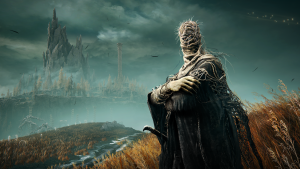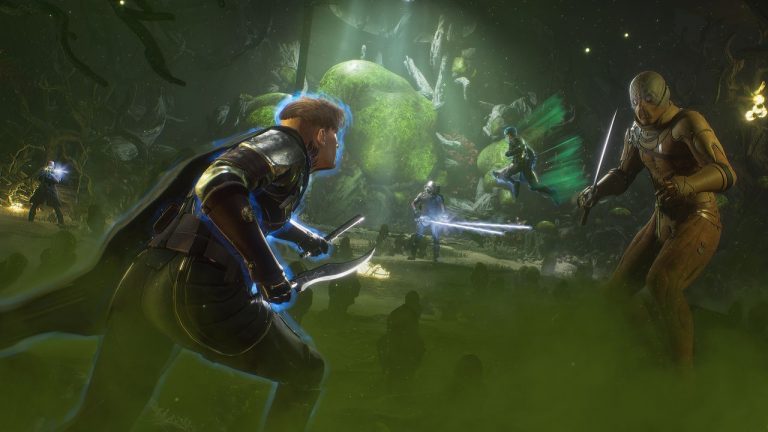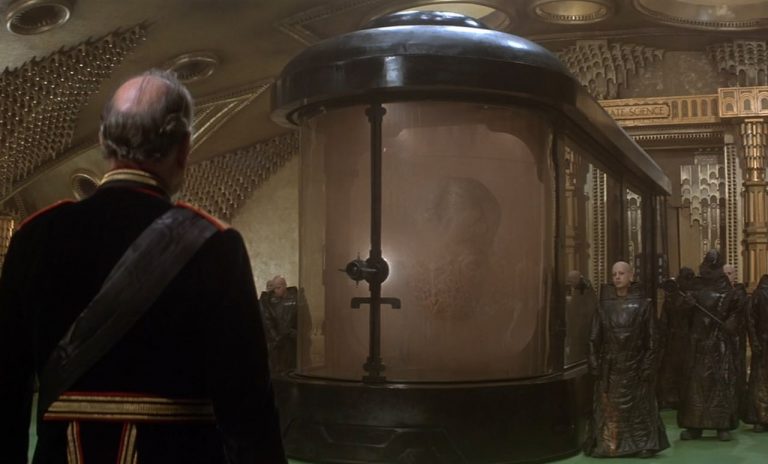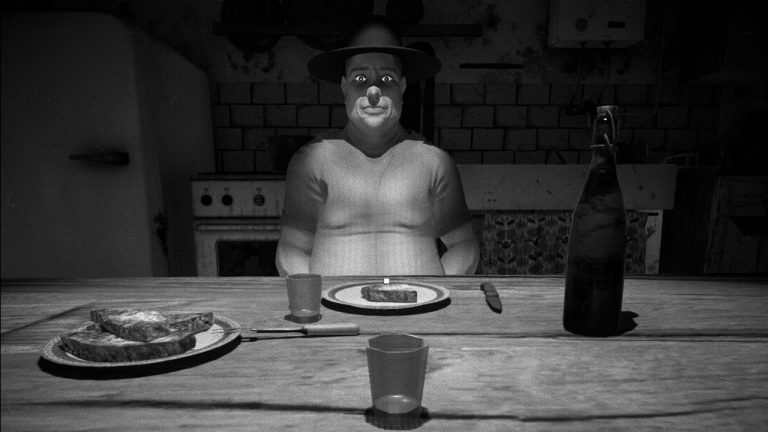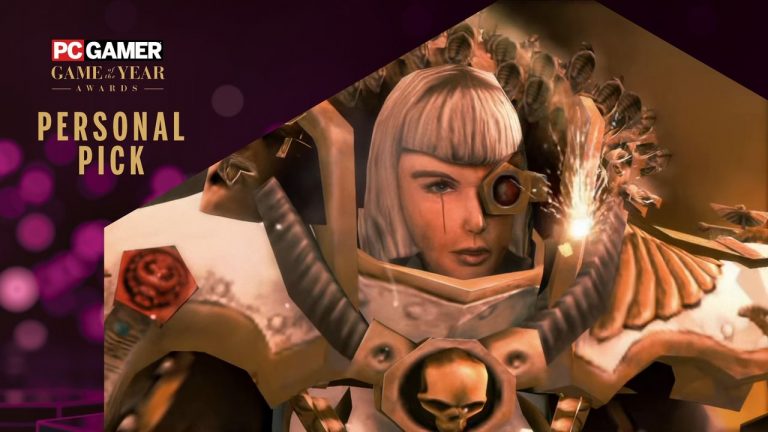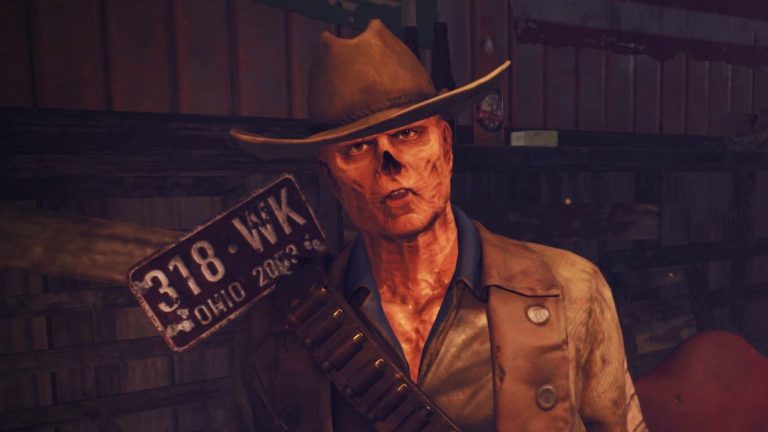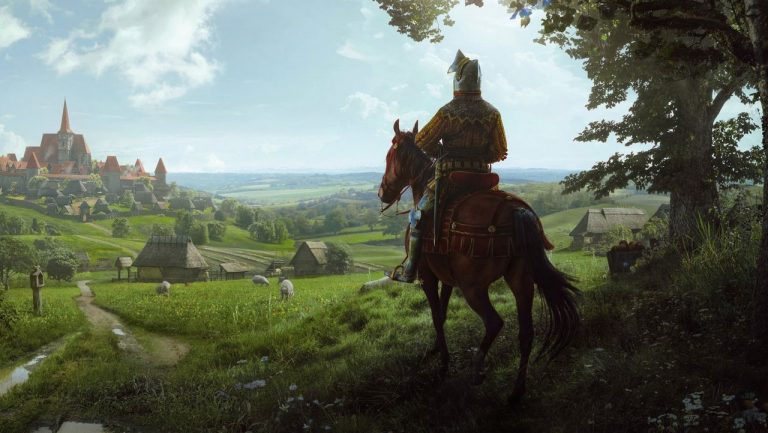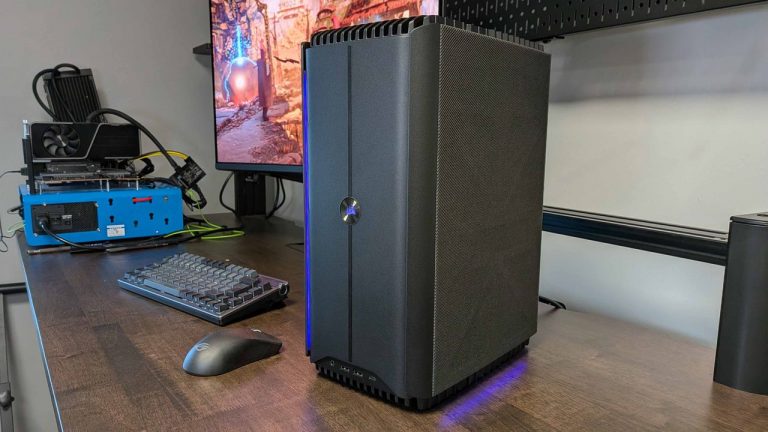Deep underground in a frigid cave system full of pots, I tossed away my wand and spin-kicked a monkey samurai to death. It was on my second attempt at fighting Demi-Human Swordsman Onze when I realized I’d made a mistake by picking the spellcaster character for my three-hour session with Elden Ring’s Shadow of the Erdtree DLC. I wasn’t born to cast magic; I was born to cast these hands.
I don’t usually drool over new weapon reveals unless they look especially absurd, like Bloodborne’s Whirligig Saw. But in the original Shadow of the Erdtree trailer, the footage of a Tarnished rising into the air to pummel an enemy with fist and foot had my full attention. Going ‘straight hands’ was not on my list of potential builds to take into the DLC until I actually used the Sacred Dry Leaf Arts weapon and realized I’d be a fool to ignore it.
Because Shadow of the Erdtree is meant to be played somewhere near the middle of your journey through the base game, where bosses tend to be more ruthless, playing as a caster can be a pain. I was getting knocked around by bosses and knew there was no way I’d get through them without learning when to squeeze a spell or two in. My three hour preview didn’t leave a lot of time for practice and I was too lazy to visit Rennala and respec, so I changed my approach and equipped both the new martial arts and throwing dagger weapons.
The Souls series has had similar weapons before: Dark Souls 2’s Ivory King DLC introduced the Bone Fist weapon which lets you fight with a similar style as the Sacred Dry Leaf Arts. But the Bone Fist’s stilted jabs and uppercuts look wimpy compared to the way your character leaps and twirls in the air with the Sacred Dry Leaf Arts. Elden Ring’s version is almost balletic to watch.
The moveset’s flying spin kick weapon art (which you can see in the trailer) is what grabbed me to start. Not only is it excellent at breaking enemies out of their attacks as you smash and kick their face in, it obliterates their health bars: Onze was almost down to half his health after one full combo, and weaker enemies crumbled before my feet hit the ground again. The downside is the complete lack of range and the amount of recovery time you need between normal attacks—it’s still a FromSoft game, after all. Careful positioning around walls, dodge-rolling, and crossing your fingers nobody interrupts the move and sends you back to a Site of Grace worked well in the dungeons. Things got trickier out in the open world, but riding Torrent can aid with that.
It felt like I had a gun from Bloodborne in my right hand, ready to knock enemies back if they got too close to my frail, robed form.
Our premade characters came equipped with a number of items and spells to use so we could duct tape an effective build together quickly. I didn’t bother going too deep on min-maxing, but I threw on the Golden Vow incantation’s extra attack power and defenses as well as Flame, Grant me Strength for even more power. It was probably overkill for the Messmer soldiers and gravebirds scattered throughout the grassy opening plateau, but helpfully confirms that the fists can synergize with a lot of the buffs from the base game. My plan is to swap them into a strength and faith (they scale with those) build as soon as I find them in the DLC.
I imagine they won’t be ideal against the poison-spewing scorpions hanging out in the halls of the first major dungeon, however. For them, I dual-wielded a staff and the new throwing dagger weapon (Sacred Smithscript Dagger). Anyone who has dabbled in magic in Elden Ring will know the awkward moment when an enemy has so little health left that it’s barely worth casting an entire spell. The throwing dagger is perfect for times like that, and it’s clutch if, say, 10 mini scorpions are about to jump you and there’s no time to ready a massive AoE spell. It felt like I had a gun from Bloodborne in my right hand, ready to knock enemies back if they got too close to my frail, robed form.
It works just like the throwing dagger items from the base game, but without the hassle of having to worry about how many you have left. The Sacred Smithscript also has a weapon art for throwing a stronger dagger with some serious stopping power. It’s a weapon for those who like the throwing dagger fantasy but find Elden Ring’s existing version too weak and don’t want to manage a limited supply of them. I’m certain the build sickos will find a ridiculous combo with this thing, but it was already great as a simple tool for a basic caster setup.
Sekiro mode
(Image credit: FromSoftware)
Both new weapons were surprisingly complementary to a spellcaster for their speed. If I wasn’t going all in on the fists, I’d consider running some kind of spellsword hybrid build with them as an answer to the DLCs surprisingly fast enemies. The few bosses I saw were as spry as the ones you find in the back half of the base game. The lion dancer boss, for example, doesn’t politely charge up big attacks while you send out a few spells hoping to make it flinch. It’s relentless and requires precise timing or weapons like the fists or the throwing daggers to counter its speed with your own.
Speed actually seems to be the trend with Shadow of the Erdtree and FromSoft in general. It’s been years since Dark Souls was about trading blows like it was a turn-based game. Dark Souls got progressively faster with each entry and Bloodborne went even faster. Sekiro was the turning point, even if it isn’t technically much of an RPG or a proper Souls game. You can’t build a slower Wolf, because the pace of the world and its enemies are all faster than any other FromSoft game before it. Sekiro fights toyed with the concept of trading a series of attacks rather than individual blows, a delicate balance between punishment and reward that kept fights from dragging on too long. For as much as I miss the elegance of Dark Souls 1’s combat, I don’t think Elden Ring would’ve been able to incorporate the variety of bosses it has with such a sluggish pace. The base game sat in a comfortable place between Dark Souls 3 and Sekiro and let you customize how nimble you wanted to be while maintaining the Souls series’ back-and-forth style of combat.
Shadow of the Erdtree, as these two new weapons made instantly clear, suggests FromSoft is willing to crank Elden Ring into a faster, Sekiro-like pace for its last dance. The fist weapon is the closest I’ve ever seen a FromSoft game get to letting you just spam light attacks with success. I’m sure later areas in the DLC will push back on that, but not having to think about the length of an animation quite as much felt like Goku taking the training weights off. I was almost playing Devil May Cry in Elden Ring and, added to a game whose meta has been dominated by powerful slow hitting special moves like the Marais Executioner drill or Moonlight Greatsword blast, it was a playstyle I had no idea I wanted. It’ll have some serious synergy with some of the existing Ashes of War, too. Maybe the one for kicking down shields will finally have more than a thematic use.
You’ll be able to get your own taste of Elden Ring running at 1.5x speed on June 20 when Shadow of the Erdtree releases.

